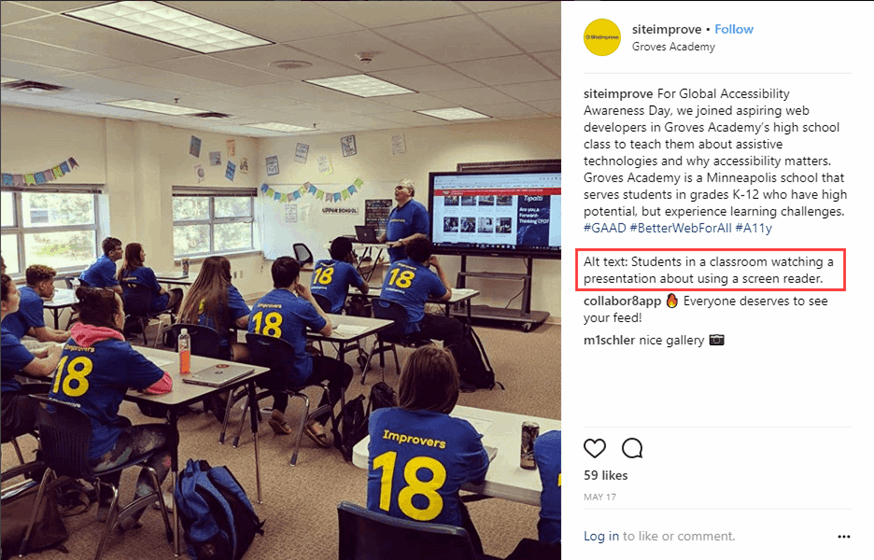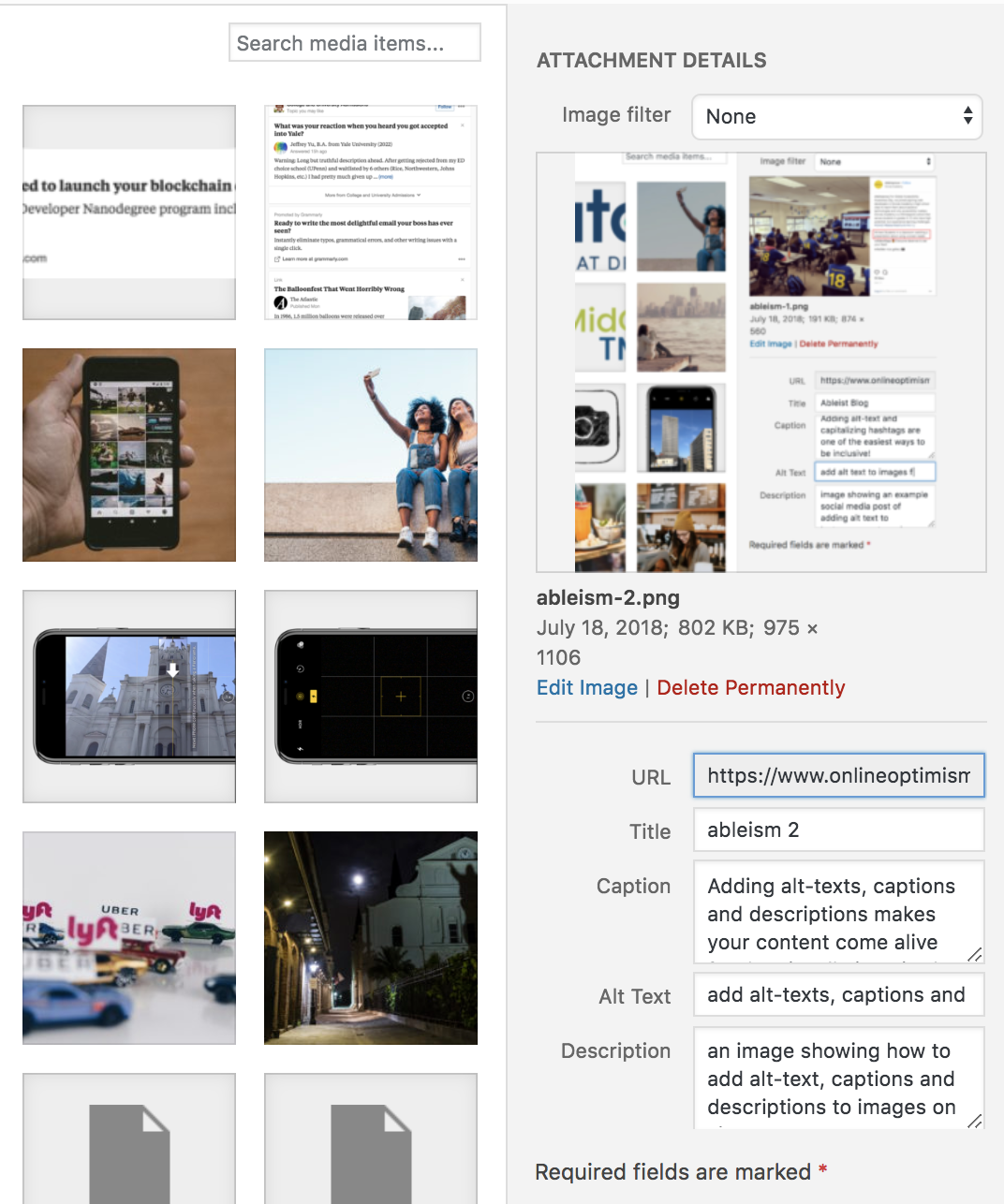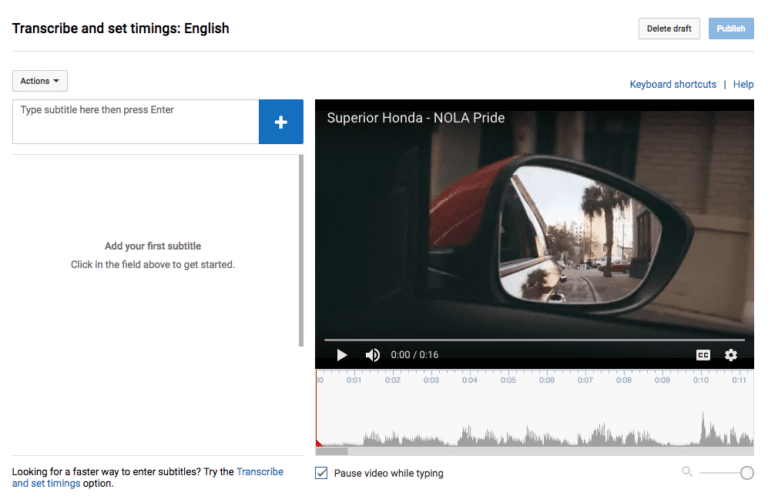How to Avoid Ableist Marketing Strategies
*Updated October 8, 2020
While you scroll through your favorite Instagram accounts or watch yet another Buzzfeed video on YouTube, do you ever wonder how people without access to great vision or hearing enjoy these same staple apps? Have you ever wondered “How do the visually impaired even use the Internet?” Technology has come an incredibly long way, and there are more apps, settings, features, and ways for those with physical differences to have similar experiences to their able-bodied counterparts. As marketers, it is our job to provide solutions to the various needs of users who want to consume our content, shop our stores, and follow our favorites. So how do you accomplish this? By understanding how ableism sneaks into your strategy (often unintentionally) and how to avoid the pitfalls of ableist marketing techniques.

The importance of inclusive advertising cannot be understated. While it might seem simple and commonplace to avoid racist and sexist concepts in marketing pieces (yet people still keep doing it), we continue to see a steady stream of ableist language, motifs, and preference in most marketing and advertising efforts. At Online Optimism, we work to constantly approach our marketing strategies in a way that provides inclusion for all people. We compiled a small list of some of the practices that you can take in your social media, SEO, advertising, and more in order to avoid ableist marketing.
To begin, let’s explain what ableist marketing is exactly. Ableism is defined by the Oxford Dictionary as “discrimination in favor of able-bodied people.” This means expressing, whether on purpose or inadvertently, that able bodies should be the only ones that are targeted. This kind of discrimination excludes those who have physical, mental, or developmental disabilities—the visually and hearing impaired, those with mental illnesses or physical differences, and more. In fact, discriminating against those with disabilities in “places of public accommodation,” like websites, was made illegal in the 1990 Americans with Disabilities Act. You don’t want your brand to face ableist accusations; you want to be a brand that is accepting and accessible to all. So how can you avoid this kind of exclusion in your and your clients’ marketing?
Social Media
Social media is one of the strongest ways brands represent themselves in today’s marketing. However beautiful your photos and videos might be, are you making them “viewable” to everyone? Although the visually impaired and blind might not be able to “see” your photos and videos, you can still detail to them what is present. By simply adding an extension of your captions describing the content, you allow more people to access your brand. Also, think about how you write hashtags. When someone with visual impairments uses a screen-reader to look at your Instagram post, the screen-reader will read out the whole hashtag as a single word, which can often confuse the user. Instead, make sure to write all your hashtags as proper nouns: #TooBlessedToBeStressed, for example. A great app to use to help make your Instagram stories more accessible is Cliptomatic, it automatically transcribes your audio into captions for your hearing impaired followers.

Search Engine Optimization & Content

A lot of tips that help improve accessibility in your web design and page content are SEO best practices as well. Consider what your headers are: do they follow the sequence of your page or content? Be sure that if you are creating content for websites, you are adding alt-text and captions to the images you are including with your writing. Most in the marketing field know that alt-text on images is an SEO best practice; however, do you know that the reason it is a best practice is so those with visual impairments can “see” your images? You do this so Google and other people can see your images.
It’s not just the technical aspect of your content that needs to be inclusive. You want to make sure that the language and themes you are promoting are also not ableist. Avoiding hurtful language, such as “lame,” “dumb,” or “crazy,” is a smart place to start. These words, while part of the lexicon, have detrimental origins and should be largely excluded from your content. For more information, here is a guide explaining ableist language and alternate words.
Also, lose CAPTCHA altogether. And when you are linking to something within your content, think about what the anchor text is for that link.
Video Content & Advertising
Video content is the preferred method of content distribution in today’s markets. People spend so much time on YouTube and consuming video content that most marketing agencies and consultants don’t think twice about including it in their plans. However, in order to make it as inclusive as possible, make sure that you are adding closed captions to your videos wherever they are hosted so that those with hearing impairments can enjoy as well. And for goodness’ sake, try to make sure that the captions line up with the timing of the video.

Quality Assurance
When you look at your website as an able-bodied person, you are probably looking for a few different things: overall theme, spelling and grammatical errors, and whether it reflects your brand well. And these are important questions. But consider things such as colors in correspondence to your calls to action. What do the colors and shapes of your key action buttons look like? Do they stand out? Do they have a decent amount of contrast? Avoid using calls to action like “click here,” because, with site readers, that doesn’t explain what they might be clicking on. Instead, use something more descriptive, such as “sign up for our newsletter.” Think with Google shares an excellent article that contains the Guidelines for Designing Accessible Websites and Apps that promotes the importance of testing your sites and apps through services like Google Lighthouse for Accessibility as well as Google’s Accessibility Scanner app for mobile sites. There are so many tools available to improve the level of accessibility of sites and apps, take advantage!
Contact Capability
If your business relies heavily on calls from potential customers, try to make sure that calls aren’t the only way that a user can get in touch with you. Have contact forms and email options available for those who have hearing difficulties. You don’t want to discourage someone from reaching out to your business, so be sure to offer a variety of ways for fast, easy contact.
We’re certainly not experts, and there are so many other resources that you can browse in order to get more in-depth and expert advice on how to avoid ableist marketing techniques. Whether you are looking to stay up to date or wanting to take a good, long look through your past work, it’s never too late to correct your past mistakes. Your users will thank you for it.
